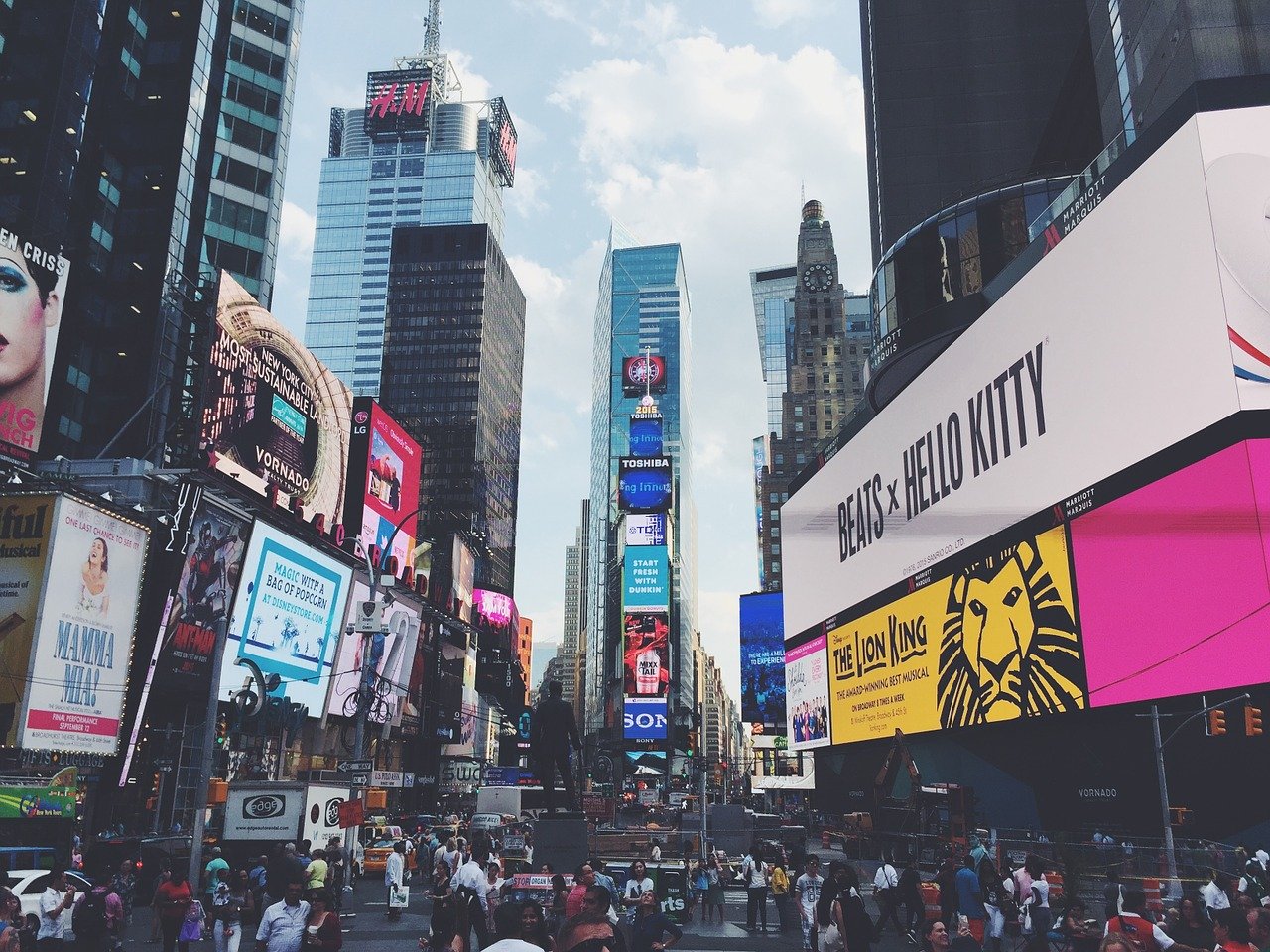The out-of-home advertising industry is buzzing about digital out-of-home. Last year, DOOH accounted for 37.3% of the total global OOH ad spend, according to estimates from WARC. The same report predicts that DOOH will grow 10.1% each year between 2018 and 2021.
But, DOOH isn’t necessarily better, or even more technically advanced than “traditional” OOH. Some static OOH channels are powered by as much, if not more, technology than digital ones. Buyers need to understand the pros and cons of each format and be aware of common misconceptions plaguing the space.
Creative and viewability factors
The chief appeal of OOH is that it is effective — and an alternative, or supplement, to the crowded world of online advertising. This benefit holds whether the creative is digital or static, with both options having pros and cons.
Since digital OOH channels rotate ads from multiple brands on a single digital billboard, publishers can serve more impressions. This is part of the reason publishers are keen to convert static placements to LCD or LED screens: they can sell more advertising. That doesn’t mean that there aren’t any benefits for marketers. Nothing needs to be printed or manually placed, so creative lead times are short. The more advanced DOOH advertisers create dynamic ad experiences, leveraging familiar digital capabilities like weather triggering and dayparting. GlaxoSmithKline (GSK) increased brand awareness for its allergy medicine, Piri, by using digital signage to share real-time pollen counts. Better yet, the campaign only went live when pollen counts passed a certain threshold.
One downside, though, is that DOOH advertisers share physical space with other companies and miss out on impressions. With static OOH, companies have 100% viewability and ownership. Static placements are often easier to read and of higher visual quality than many digital images. You can’t create dynamic creative, but you can still ignite online or offline action with compelling copy and visuals. To create an immersive experience and tell a sequential story, advertisers can purchase a series of static placements that reflect their audience’s travel patterns. For example, to raise awareness and increased app use, a delivery service used posters on New York City subways. In one week, the campaign generated 1.1M earned impressions on social and, ultimately, drove a 10% increase in app use.
Ease of buying, targeting and measurement
Ease of buying and new targeting and measurement capabilities are also driving DOOH growth. Buyers can purchase DOOH impressions on programmatic exchanges, like Adomni or Rubicon Project Exchange, and use data and technology to target ads, measure campaigns and leverage DOOH as part of a multimedia marketing campaign.
Many brands don’t realize static OOH is evolving, too. New buying platforms make it easier to purchase static impressions. For example, AdQuick allows users to buy and sell billboards from its simple online platform. Sophisticated OOH advertisers use DMA and demographic data to inform their targeting strategies, the same way they do with digital placements.
A growing number of OOH solution-providers offer real-time analytics and audience measurement tools that leverage GPS, location data, Wi-Fi and eye-tracking technology. These technologies are used for a variety of static OOH campaigns, including billboards, wrapped vehicles and car toppers. While the creative itself is static, the buying and measurement platforms are as advanced, or sometimes even more advanced than their DOOH counterparts.
The truth about pricing
Another misconception is that digital automatically means cheaper, but that’s not always the case. According to recent estimates from the financial advisory firm PJ Solomon, DOOH CPMs are significantly higher than other forms of OOH.
DOOH is poised for continued growth, and for good reason — but buyers need to understand that traditional OOH is becoming more sophisticated, as well. What matters most is the technology powering the buying, targeting and measurement — not the screen itself.
An entrepreneur since his teenage years, Wrapify CEO and founder James Heller started a digital marketing and IT consulting company that set the foundation for him to become a marketing leader in tech for Fortune 50 companies. In 2017 Heller was named a Forbes 30 Under 30 – Featured Honoree, is on the OAAA Innovations Committee and led Wrapify to be named a 2018 AdAge Titans Finalist.
If you enjoyed this article, sign up for SmartBrief’s free email from the ANA Data & Analytics SmartBrief. It’s among SmartBrief’s more than 200 industry-focused newsletters.
